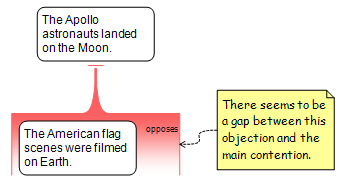

I believe Mary-Kim Arnold uses this technique throughout “Lust”, but then so much of “Lust” is concerned with frustration, with not really sharing or penetrating, that it’s hard to know whether it’s an example or a warning. I’ve never heard Coover talk about technique at this level, but I bet he’d have an opinion. I think I can find people who know the answer, or some answer. I believe this question has never been raised, much less answered, in the research literature or in criticism.

There might not be a lot of money in hyperfiction, but there’s plenty in Web writing and there’s plenty in game design. We’ve been writing with links for twenty years. This question of technique confronts everyone who writes a narrative with links – fiction or nonfiction, artistic or utilitarian – in the third person. Is this a sign of sloppy writing? Or is it a showy technique, to be used with care and discretion and typically reserved for episode boundaries? Or is this simply the sort of thing that hypertext narrative lets us do well? Film does this all the time: two-shot, close-up, reaction-shot. On the first page, we were privy to Amy’s thoughts, on the next, Eric’s.

We’re still with Amy and Eric, but now we hear about Eric’s surprise, confusion, and dismay, for he has only now realized that he secretly loves Amy.On the current page/screen/lexia, our narrator tells us why Amy is pointing a pistol at Eric – and what she secretly hopes to accomplish.
#Another layer of indirection free
In a hypertext, when can we change the focus of free indirect style? Let’s look at an example: But who else could know, really, whether Fanny could respect them or not, or what she had hoped? Someone else is telling us that she could not respect her parents. She could not respect her parents, as she had hoped. Nobody was in their right place, nothing was done as it ought to be. Moretti gives a nice example from Mansfield Park: It was the abode of noise, disorder, and impropriety. Narrating in “free indirect style,” we adopt the distance and objectivity of an outside narrator while still seeing into the character’s mind.


 0 kommentar(er)
0 kommentar(er)
